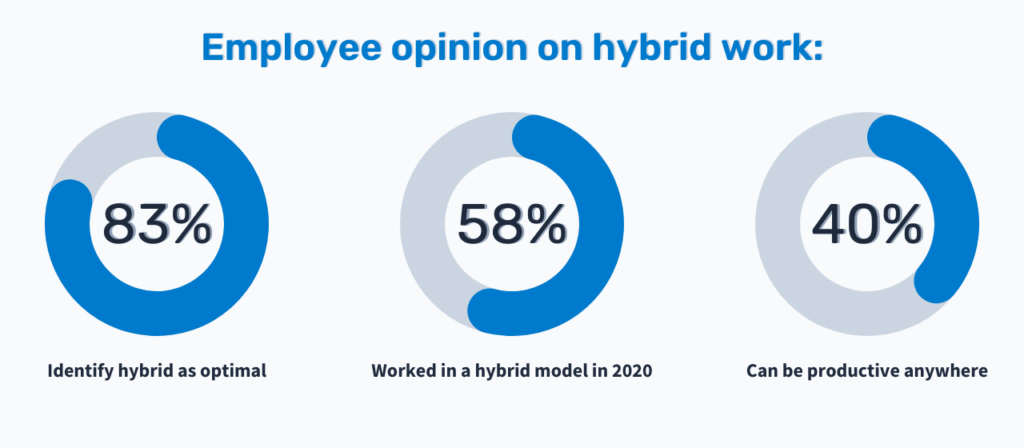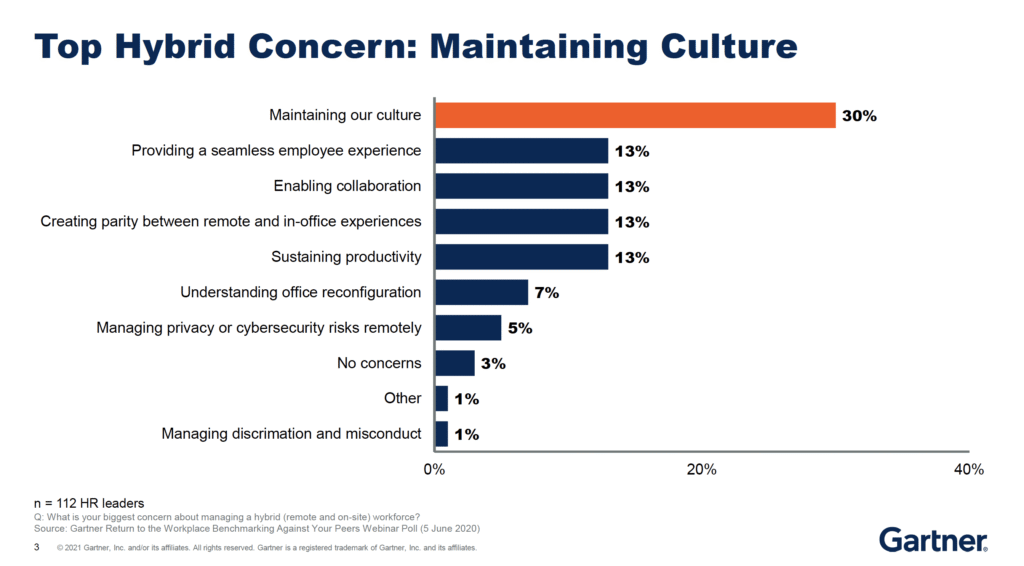Introduction to Hybrid Work Culture
According to an ET HRM survey, 83% of employees say they feel more productive in a hybrid setup, which is exactly why hybrid work isn’t a nice-to-have anymore, it’s just how companies actually run now.
Honestly, it’s messy, useful, and kind of inevitable. Get it right, and people stick around; get it wrong, and you end up with missed cues, lonely Slack threads, and an office that’s half-full and half-ghost.
For leaders, marketers, HR folks, and freelancers – yes, this matters to you. A solid hybrid culture can cut friction, speed up decisions, and turn the office into a place people choose to go to, not one they’re forced to show up for.
To be fair, that’s easier said than done. There are trade-offs, and some of them sting.
This piece pulls together what hybrid work actually looks like, the ups and downs, and a hands-on playbook you can copy. No corporate fluff, just practical stuff you can try next week.
What Is Hybrid Work Culture?
Put simply, a hybrid work culture is the set of rules, habits, and expectations that let people work from more than one place: home, café, office, or whatever.
It’s not a schedule pasted on the intranet. It’s the invisible stuff: how decisions get made, who gets credit, where meetings happen, and how people feel about the whole setup.
How does it work in practice?
You pick norms: when to meet in person, what belongs in async docs, and which decisions need a quick huddle. You pair those with tools, and (this is the key) train people to use them.

Managers play the biggest role here; they’re the ones who either glue things together or accidentally splinter teams.
Why is the spotlight on hybrids now?
It blew up during the pandemic, sure, but it stuck because a lot of organizations found that hybrid models can sustain productivity while giving people flexibility. People liked fewer commutes. Companies liked lower overhead. It’s that simple, plus a pinch of “we don’t want to lose our best people.”
Advantages and Disadvantages of Hybrid Work Culture
Advantages:
- Hybrid work gives employees more control over when and where they do their best work, which often means happier, more motivated people.
- People can concentrate during their peak hours, which typically improves the quality and quantity of work.
- Organizations can trim office costs (less wasted space, fewer fixed desks) if they plan it right.
- Offices become intentionally useful: collaboration zones, not rows of lonely screens.
- Better work–life balance for many (fewer commutes, more flexibility for family needs or appointments).
- The talent net widens: you can hire outside the commuting radius without forcing relocation.
Disadvantages:
- Communication gaps show up fast, tone and nuance get lost in text and short calls.
- Not everyone has a quiet, dedicated home workspace; productivity can suffer for some.
- Boundaries blur: people feel they must always be “on” to be visible, and that’s a burnout trap.
- Proximity bias happens, people in the office sometimes get noticed more and promoted more.
- More tech means more security headaches; home setups aren’t always enterprise-grade.
- Many managers haven’t been trained to lead hybrid teams, and that inconsistency hurts engagement.
Step-by-Step Guide to Designing a Hybrid Work Culture
Step 1. Diagnose and Define
Ask your team. Ask actively. Not a one-question poll, but real conversations: What works? What annoys you? What makes you feel visible? Then write a short hybrid playbook: core days (or none), meeting norms, decision owners, and the channels that matter.

Step 2. Train Managers
This is non-negotiable. Teach managers to evaluate outcomes, not presence; run meaningful 1:1s over video; and spot signs of disconnection early. Give them scripts and simple templates. Small investments here pay off big.
Step 3. Set Rituals and Norms
Create lightweight rituals: weekly two-line wins, async demos, and a shared decision doc. Tell people where to put what (agenda in the calendar invite, decisions in the doc). Make the rules visible and stupidly simple.
Step 4. Measure Outcomes
Use OKRs or clear KPIs. Replace status-for-status’s sake meetings with async updates tied to results. Run short pulse surveys and actually do something with the answers, share the follow-up.
Step 5. Design Spaces
Reconfigure the office for collaboration: rooms for whiteboarding, booths for deep work, and not a hundred unused desks. And equip remote folks properly: good mics, a stable VPN, and a decent camera. Small tech annoyances compound fast.
Step 6. Pilot and Iterate
Try for 30–90 days, collect feedback, and tweak. Don’t over-polish before launch. Real use will reveal the kinks.
Activities That Promote Hybrid Work Culture
Yes, you need rituals. And yes, they can be fun.
- Hybrid Escape Rooms: Escape rooms are great for small teams working together under a time limit, mixing remote and on-site folks. It builds problem-solving and forces communication in a playful way. Companies like Breakout.in specialize in experiential games that enhance bonding across locations.
- Fun Engagement Rituals: Quick trivia, themed meetups, random coffee draws – little things that break the monotony.
- Learning Sessions: Short show-and-tells, skill swaps, or “what I learned this month” segments. Keeps learning visible and social.
- Innovation Sprints / Hackathons: Time-boxed sprints that welcome remote collaboration. Results-first, location-agnostic.
- Quarterly Meet-ups: A day or two in person each quarter can reset bonds, but make the agenda worth the trip.
Engagement and Performance in Hybrid Work Culture
Engagement and performance in a hybrid setup… honestly, they’re trickier than people admit.
Some days the team is buzzing in the office; other days, everyone’s scattered across living rooms and cafés, and you’re just hoping the Wi-Fi gods behave.
And here’s the thing: people don’t perform well just because you give them “flexibility.” They perform when they feel connected, looped in, and actually seen.
I’ve watched teams light up just because their manager remembered to shout out a quiet win in a group chat. And I’ve seen the opposite – folks slowly disengage because decisions happen in office conversations, and remote people hear about them three days later.
Hybrid works when leaders create tiny habits: quick check-ins, super-clear expectations, and space for people to speak up.
It’s messy, sure, but once people feel valued (even if they’re answering emails in pajama pants), their performance just… lifts. Makes you wonder why we ever assumed everyone needed to sit under one roof to do great work.
Future of Hybrid Work Culture
Hybrid isn’t a stopgap. It’s evolving into something intentional: smarter office layouts, better async tools, and stronger manager training.
Expect tech that makes async decisions easier and platforms that capture context so newcomers don’t feel lost.
Psychological safety will matter more, too. Organizations that make people feel included regardless of where they sit will win the talent wars.
Conclusion
Hybrid work won’t fix everything. It also won’t implode if you pay attention. The trick is to treat hybrids as design work: set clear norms, build rituals that actually stick, coach managers, measure outcomes, and iterate.
Start small. Pilot quickly. Listen. And yes, try an escape room. It’s fun, and humans remember fun.
And finally: the teams that thrive in hybrid setups aren’t the ones with the fanciest tech or biggest budgets, they’re the ones that stay curious, keep adjusting, and genuinely care about making it work for everyone.









